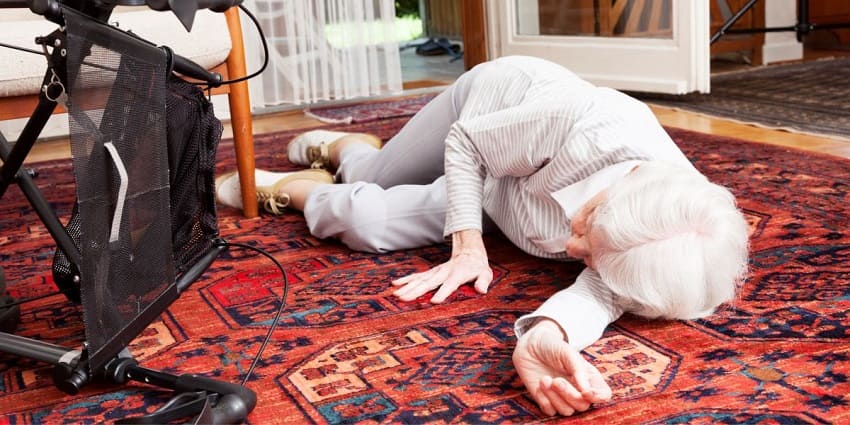Witnessing a senior citizen taking a tumble can be a terrifying experience. As people age, they sometimes rapidly lose muscle mass and bone density, which can have horrible consequences when they fall.
If there is no one else around, you need to immediately call for assistance – from the emergency services or the nurse on duty. Once they have gotten checked, ensure that you have documented everything in case their incident qualifies as a slip and fall injury – in which case they are entitled to damages money.
After that, you can get them checked out at the hospital or by their primary care physician. There are a few injuries that should never be taken lightly, and you need to ensure that their medical professional team takes a good look at the following potentially severely injured areas:
1. Lacerations
Lacerations can vary drastically in severity – from minor scrapes and cuts that only require cleaning and a dressing to more serious ones that need stitches sooner rather than later. An untreated laceration can lead to more extreme health concerns among the elderly, such as infections and gangrene.
2. Bones
Broken bones are one of the most common fall-related injuries in the older population. According to multiple studies published in the Journal of Clinical Endocrinology & Metabolism, broken bones can have a long-term effect on older people.
More specifically, this type of injury can increase the risk of death for up to a decade after the fall and may be a catalyst for more severe health events.
3. Head Injuries
Falls from standing height in the elderly often result in head injuries. The severity of the injury will vary depending on multiple factors, and the biggest reason to have an older person thoroughly examined after a head injury is if they are taking blood thinners for other health issues.
Many older people take blood thinners (like Warfarin) to reduce their risk of having a stroke due to pre-existing health conditions. The risk of internal bleeding is higher in patients taking these medications, and these people need to be checked from top to toe if there is enough reason to suspect more serious damage.
In patients like these, medical alert devices are a must-have. They will give you and your loved one the peace of mind that you both deserve – knowing that if something occurs, they will have access to help when they need it most.
4. Medications Review
Older people have difficulty moving, particularly during the colder months, which means that they are more susceptible to tripping and falling. However, if your older friend or loved one has recently fallen and they do not have a history of mobility issues or instability, have their doctor check their medications.
Some medications can interact with others and result in dizziness or vertigo. Sometimes the doctor can prescribe alternate medicines that won’t have such a serious interaction, but if they can’t then you need to help them find a way to live with it.
A good thing to try is a walking stick or a walking frame, that way they will have something to keep them steady and both feet on the ground. Make sure that their homes are clutter-free and research fall prevention techniques to use to make their living spaces safer.
5. Inflammation
Inflammation is a normal bodily response to trauma and injury. After a fall, you can reasonably expect to discover some inflammation around the areas that took the most damage during the incident. When the inflammation doesn’t go away, or if it gets worse, that is when you need to be concerned.
Post-traumatic arthritis is inflammation in the joints that form after someone has experienced a trauma. It develops quickly and can take months to go away. Another complication that causes inflammation is an infection, and that should be the number one thing to worry about during the recovery period.
6. Oozing Wounds
There are different levels of oozing when it comes to wound recovery. Once a scab forms, the body’s immune system naturally starts to protect the area from developing an infection. The wound site can become slightly swollen, pinkish, and tender.
After a little while, you may notice clear fluid oozing from the wound – that is normal. If that fluid changes in viscosity or color, that is when you need to have a medical professional step in and assess the situation because that could be a sign of a nasty infection taking hold.
7. Limps
If you notice your friend or loved one has developed a limp after a fall, you need to have them assessed by a medical professional. A limp could be normal after injury if there is muscle pain, but if the limp continues then it could point to something more serious, such as a fractured hip.

